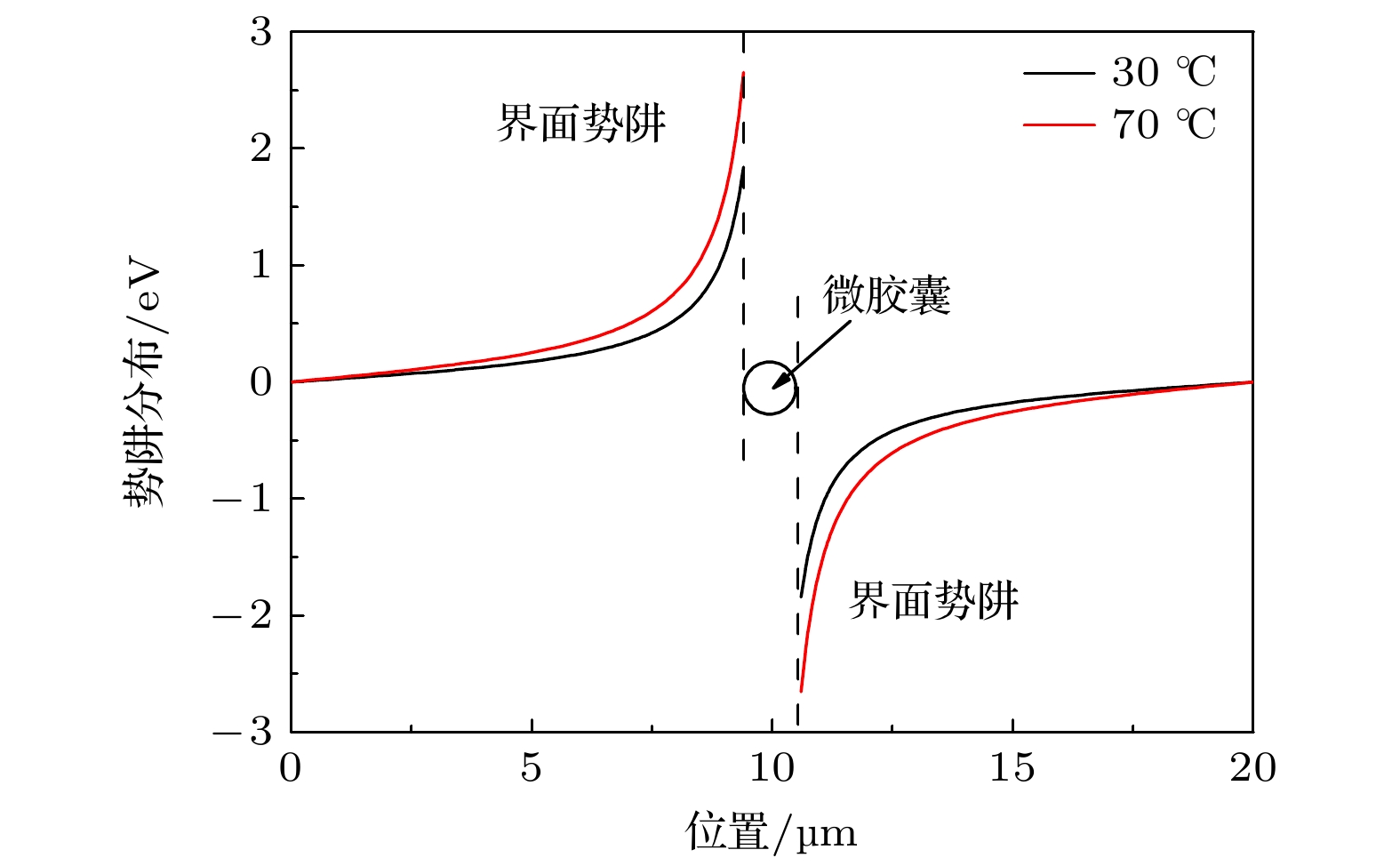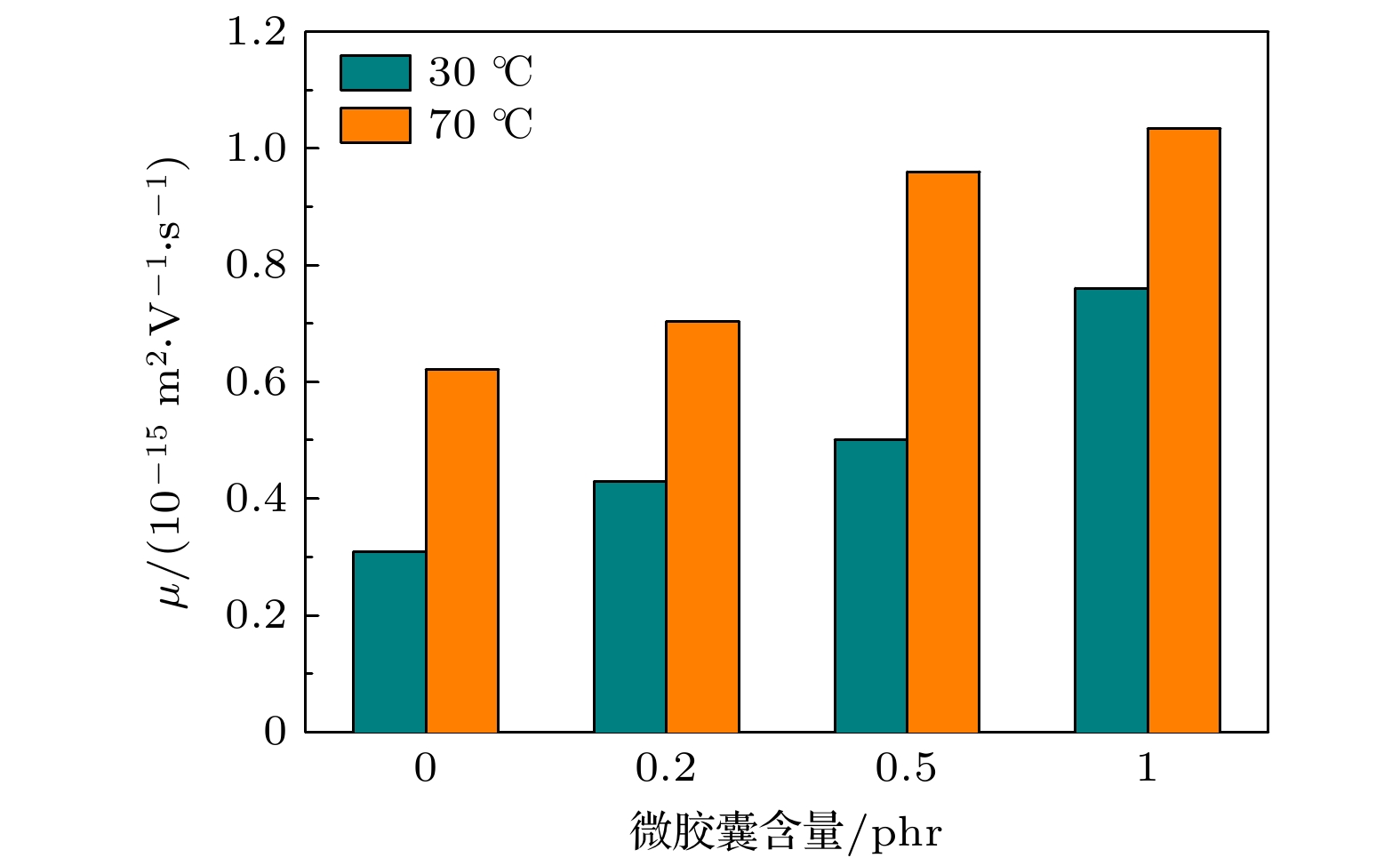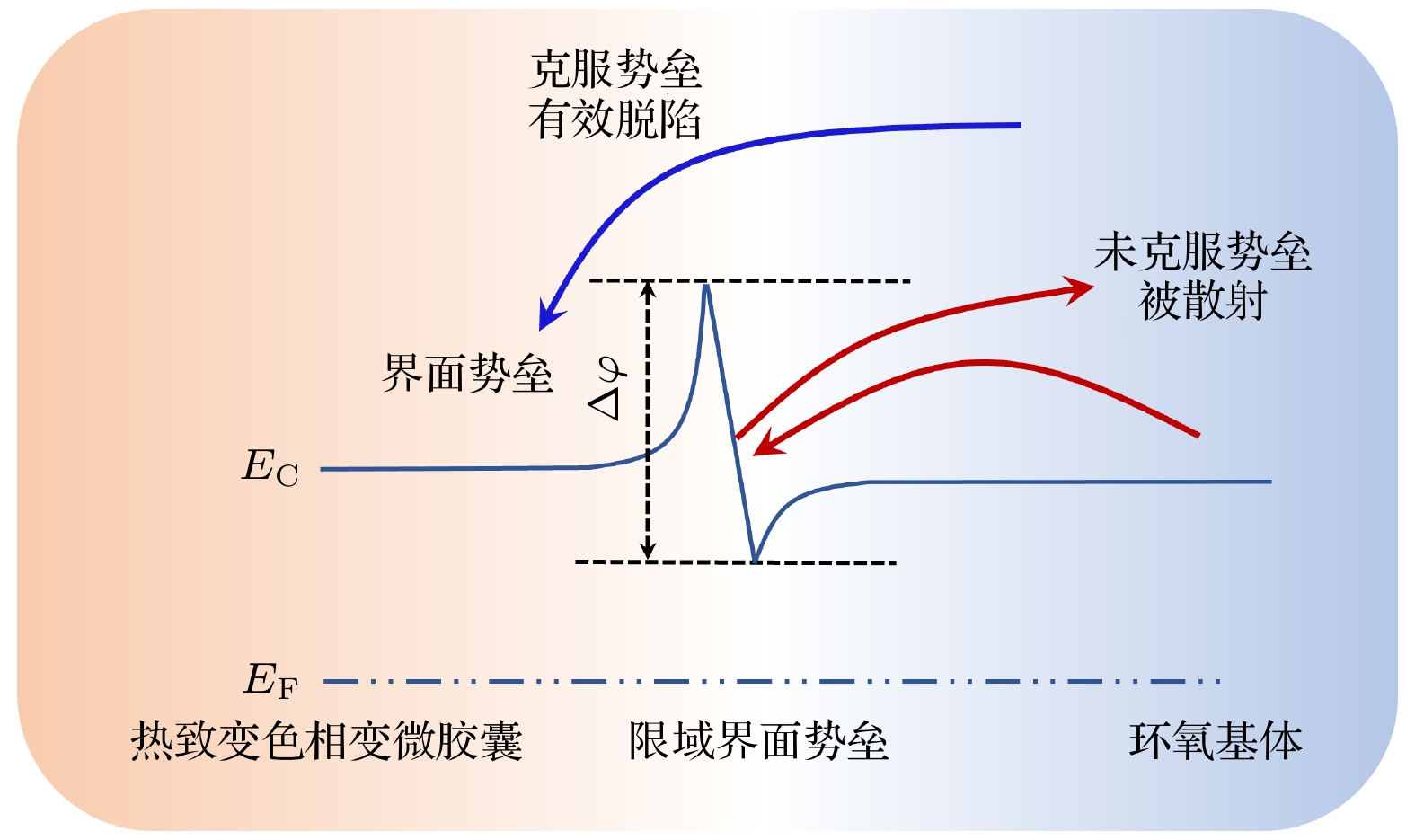-
热致变色相变复合绝缘在电热激励下能实现一系列先进功能, 已广泛应用于大量智能电气与电子设备中. 然而热致变色相变复合绝缘存在限域结构, 无法通过现有的纳米复合界面模型分析其电荷陷阱特性, 导致其在电热耦合应力下的介电可靠性提升缺乏科学依据. 本文通过等温表面电位衰减(ISPD)、开尔文探针力显微镜(KPFM)等方法, 研究了热致变色相变环氧复合绝缘的电荷陷阱特性与机理. 结果表明: 30 ℃和70 ℃下限域结构对热致变色相变环氧绝缘陷阱特性的影响趋势相反, 可能源于限域相变或限域界面的影响. 理论分析发现, 限域相变对陷阱温度特性的影响规律与实验结果不符, 并非影响陷阱温度特性的主要原因. 通过KPFM原位表征直接验证了限域界面内存在势垒, 且起源于接触起电机制. 限域界面接触起电电荷量随温度的变化会影响限域界面势垒高度, 是影响陷阱温度特性的主要原因.
-
关键词:
- 热致变色相变复合绝缘 /
- 陷阱特性 /
- 开尔文探针力显微镜 /
- 接触起电
Thermochromic phase change insulating composite can possess a series of advanced functions under electrothermal stimuli, which has been widely applied in a great number of intelligent electrical and electronic devices. However, due to the confined structure of thermochromic phase change insulating composite, the trap characteristics cannot be analyzed by existing interface models of nanodielectrics, which inhibits the scientific improvement of dielectric reliability under the electrothermal stress. In this paper, the trap characteristic and mechanism of thermochromic phase change epoxy composites are studied by the isothermal surface potential decay (ISPD) and the Kelvin probe force microscopy (KPFM). The results show that the variation trends of trap characteristics after introducing confined structures at 30 ℃ and 70 ℃ are opposite, which could derive from the confined phase change or the confined interface. Theoretical analysis shows that the influence of confined phase change on temperature dependent trap characteristics is inconsistent with experimental results, which cannot be the essential reason for affecting the trap characteristics. KPFM in-situ characterization directly verifies the existence of potential barriers in the confined interface, which originates from the contact electrification mechanism. The variation of temperature dependent charge quantity due to contact electrification at the confined interface can affect the barrier height, which can substantially affect the temperature dependent trap characteristics.-
Keywords:
- thermochromic phase change insulating composite /
- trap characteristic /
- Kelvin probe force microscopy /
- contact electrification
[1] Jin Y, Lin Y, Kiani A, Joshipura I D, Ge M, Dickey M D 2019 Nat. Commun. 10 4187
 Google Scholar
Google Scholar
[2] Kim H, Lee H, Ha I, Jung J, Won P, Cho H, Yeo J, Hong S, Han S, Kwon J, Cho K J, Ko S H 2018 Adv. Funct. Mater. 28 1801847
 Google Scholar
Google Scholar
[3] Kim G, Cho S, Chang K, Kim W S, Kang H, Ryu S P, Myoung J, Park J, Park C, Shim W 2017 Adv. Mater. 29 13
 Google Scholar
Google Scholar
[4] Xiong R G, Lu S Q, Zhang Z X, Cheng H, Li P F, Liao W Q 2020 Angew. Chem. Int. Ed. 59 9574
 Google Scholar
Google Scholar
[5] Berardi U, Garai M, Morselli T 2020 Sol. Energy 209 493
 Google Scholar
Google Scholar
[6] Geiselhart C M, Mutlu H, Kowollik B C 2021 Angew. Chem. Int. Ed. 60 17290
 Google Scholar
Google Scholar
[7] Kim H, Seo M, Kim J W, Kwon D K, Choi S E, Kim J W, Myoung J M 2019 Adv. Funct. Mater. 29 1901061
 Google Scholar
Google Scholar
[8] Won P, Kim K K, Kim H, Park J J, Ha I., Shin J, Jung J, Cho H, Kwon J, Lee H, Ko S H 2021 Adv. Mater. 33 e2002397
 Google Scholar
Google Scholar
[9] Huang X, Han L, Yang X, Huang Z, Hu J, Li Q, He J 2022 iEnergy 1 19
 Google Scholar
Google Scholar
[10] Rain P, Nguyen D H, Sylvestre A, Rowe S 2009 J. Phys. D: Appl. Phys. 42 235404.
 Google Scholar
Google Scholar
[11] Kao K C 2004 Dielectric Phenomena in Solids (California: Elsevier Academic Press
[12] Li S, Yin G, Chen G, Li J, Bai S, Zhong L, Zhang Y, Lei Q Q 2010 IEEE Trans. Dielectr. Electr. Insul. 17 1523
 Google Scholar
Google Scholar
[13] Sui H, Wu K, Zhao G, Yang K, Dong J Y, Li J Y 2024 Chem. Eng. J. 485 149811
 Google Scholar
Google Scholar
[14] 宋小凡, 闵道敏, 高梓巍, 王泊心, 郝予涛, 高景晖, 钟力生 2024 物理学报 73 027301
 Google Scholar
Google Scholar
Song X F, Min D M, Gao Z W, Wang P X, Hao Y T, Gao J H, Zhong L S 2024 Acta Phys. Sin. 73 027301
 Google Scholar
Google Scholar
[15] Gao J, Wu K N, Zhang Z L, Li J Y, Li S T 2023 J. Phys. D: Appl. Phys. 56 425502
 Google Scholar
Google Scholar
[16] 高建, 李建英 2023 物理学报 72 107701
 Google Scholar
Google Scholar
Gao J, Li J Y 2023 Acta Phys. Sin. 72 107701
 Google Scholar
Google Scholar
[17] Lewis T J 1994 IEEE Trans. Dielectr. Electr. Insul. 1 812
 Google Scholar
Google Scholar
[18] Tanaka T, Kozako M, Fuse N 2005 IEEE Trans. Dielectr. Electr. Insul. 12 669
 Google Scholar
Google Scholar
[19] Li S T, Yin G L, Bai S N 2011 IEEE Trans. Dielectr. Electr. Insul. 18 1535
 Google Scholar
Google Scholar
[20] Liu P, Xie Z L, Pang X, Xu T L, Zhang S Y, Morshuis P, Li H, Peng Z R 2022 Adv. Electron. Mater. 8 2200259
 Google Scholar
Google Scholar
[21] 李进, 王雨帆, 杜伯学, 梁虎成 2019 广东电力 32 3
 Google Scholar
Google Scholar
Li J, Wang Y F, Du B X, Liang H C 2019 Guangdong Electric Power 32 3
 Google Scholar
Google Scholar
[22] 付强, 彭磊, 李智, 林木松, 张丽, 谢松瑜, 侯永平, 孔晓晓, 杜伯学 2024 广东电力 37 69
 Google Scholar
Google Scholar
Fu Q, Peng L, Li Z, Lin M S, Zhang L, Xie S Y, Hou Y P, Kong X X, Du B X 2024 Guangdong Electric Power 37 69
 Google Scholar
Google Scholar
[23] 李国倡, 李盛涛 2019 物理学报 68 239401
 Google Scholar
Google Scholar
Li G C, Li S T 2019 Acta Phys. Sin. 68 239401
 Google Scholar
Google Scholar
[24] Zhou J, Li Y, Wu Y, Jia B, Zhu L, Jiang Y, Li Z, Wu K 2019 Langmuir 35 12053
 Google Scholar
Google Scholar
[25] Gao J, Wu K, Li J, Yin G, Li S 2022 Smart Mater. Struct. 32 015019
 Google Scholar
Google Scholar
[26] Takada T, Hayase Y, Tanaka Y, Tatsuki O 2008 IEEE Trans. Dielectr. Electr. Insul. 15 152
 Google Scholar
Google Scholar
[27] Hwang J G, Zahn M, O’Sullivan F M, Pettersson L A A, Hjortstam O, Liu R 2010 J. Appl. Phys. 107 014310
 Google Scholar
Google Scholar
[28] Sima W, Shi J, Yang Q, Huang S, Cao X 2015 IEEE Trans. Dielectr. Electr. Insul. 22 380
 Google Scholar
Google Scholar
[29] Gao Y, Xu B, Wang X, Jia T 2019 J. Phys. D: Appl. Phys. 52 285302
 Google Scholar
Google Scholar
[30] Borgani R, Pallon L K H, Hedenqvist M S, Gedde U W, Haviland D B 2016 Nano Lett. 16 5934
 Google Scholar
Google Scholar
[31] Gao J, Wu K N, Xie Z L, Li J Y, Li S T 2023 Compos. Sci. Technol. 244 110291
 Google Scholar
Google Scholar
[32] Jalili M A, Khosroshahi Z, Kheirabadi N R, Karimzadeh F, Enayati M H 2021 Nano Energy 90 106581
 Google Scholar
Google Scholar
[33] Jia B, Zhou J, Chen Y, Lü Z, Guo H, Zhang Z, Zhu Z, Yu H, Wang Y, Wu K 2022 Nanotechnology 33 345709
 Google Scholar
Google Scholar
[34] Zhang X, Chen L, Jiang Y, Lim W, Soh S 2019 Chem. Mater. 31 1473
 Google Scholar
Google Scholar
[35] Ko H, Lim Y, Han S, Jeong C K, Cho S B 2021 ACS Energy Lett. 6 2792
 Google Scholar
Google Scholar
[36] Harris I A, Lim M X, Jaeger H M 2019 Phys. Rev. Mater. 3 085603
 Google Scholar
Google Scholar
-
图 6 KPFM实验结果 (a)试样表面形貌; (b)限域界面区域形貌高度轮廓; (c)—(e) 0 V, –5 V, –10 V偏压下限域界面内电势分布
Fig. 6. Experiment results of KPFM: (a) Surface morphology of specimen; (b) height profile of morphology in the confined interface region; (c)–(e) potential distribution in the confined interface region under 0 V, –5 V and –10 V bias voltage.
-
[1] Jin Y, Lin Y, Kiani A, Joshipura I D, Ge M, Dickey M D 2019 Nat. Commun. 10 4187
 Google Scholar
Google Scholar
[2] Kim H, Lee H, Ha I, Jung J, Won P, Cho H, Yeo J, Hong S, Han S, Kwon J, Cho K J, Ko S H 2018 Adv. Funct. Mater. 28 1801847
 Google Scholar
Google Scholar
[3] Kim G, Cho S, Chang K, Kim W S, Kang H, Ryu S P, Myoung J, Park J, Park C, Shim W 2017 Adv. Mater. 29 13
 Google Scholar
Google Scholar
[4] Xiong R G, Lu S Q, Zhang Z X, Cheng H, Li P F, Liao W Q 2020 Angew. Chem. Int. Ed. 59 9574
 Google Scholar
Google Scholar
[5] Berardi U, Garai M, Morselli T 2020 Sol. Energy 209 493
 Google Scholar
Google Scholar
[6] Geiselhart C M, Mutlu H, Kowollik B C 2021 Angew. Chem. Int. Ed. 60 17290
 Google Scholar
Google Scholar
[7] Kim H, Seo M, Kim J W, Kwon D K, Choi S E, Kim J W, Myoung J M 2019 Adv. Funct. Mater. 29 1901061
 Google Scholar
Google Scholar
[8] Won P, Kim K K, Kim H, Park J J, Ha I., Shin J, Jung J, Cho H, Kwon J, Lee H, Ko S H 2021 Adv. Mater. 33 e2002397
 Google Scholar
Google Scholar
[9] Huang X, Han L, Yang X, Huang Z, Hu J, Li Q, He J 2022 iEnergy 1 19
 Google Scholar
Google Scholar
[10] Rain P, Nguyen D H, Sylvestre A, Rowe S 2009 J. Phys. D: Appl. Phys. 42 235404.
 Google Scholar
Google Scholar
[11] Kao K C 2004 Dielectric Phenomena in Solids (California: Elsevier Academic Press
[12] Li S, Yin G, Chen G, Li J, Bai S, Zhong L, Zhang Y, Lei Q Q 2010 IEEE Trans. Dielectr. Electr. Insul. 17 1523
 Google Scholar
Google Scholar
[13] Sui H, Wu K, Zhao G, Yang K, Dong J Y, Li J Y 2024 Chem. Eng. J. 485 149811
 Google Scholar
Google Scholar
[14] 宋小凡, 闵道敏, 高梓巍, 王泊心, 郝予涛, 高景晖, 钟力生 2024 物理学报 73 027301
 Google Scholar
Google Scholar
Song X F, Min D M, Gao Z W, Wang P X, Hao Y T, Gao J H, Zhong L S 2024 Acta Phys. Sin. 73 027301
 Google Scholar
Google Scholar
[15] Gao J, Wu K N, Zhang Z L, Li J Y, Li S T 2023 J. Phys. D: Appl. Phys. 56 425502
 Google Scholar
Google Scholar
[16] 高建, 李建英 2023 物理学报 72 107701
 Google Scholar
Google Scholar
Gao J, Li J Y 2023 Acta Phys. Sin. 72 107701
 Google Scholar
Google Scholar
[17] Lewis T J 1994 IEEE Trans. Dielectr. Electr. Insul. 1 812
 Google Scholar
Google Scholar
[18] Tanaka T, Kozako M, Fuse N 2005 IEEE Trans. Dielectr. Electr. Insul. 12 669
 Google Scholar
Google Scholar
[19] Li S T, Yin G L, Bai S N 2011 IEEE Trans. Dielectr. Electr. Insul. 18 1535
 Google Scholar
Google Scholar
[20] Liu P, Xie Z L, Pang X, Xu T L, Zhang S Y, Morshuis P, Li H, Peng Z R 2022 Adv. Electron. Mater. 8 2200259
 Google Scholar
Google Scholar
[21] 李进, 王雨帆, 杜伯学, 梁虎成 2019 广东电力 32 3
 Google Scholar
Google Scholar
Li J, Wang Y F, Du B X, Liang H C 2019 Guangdong Electric Power 32 3
 Google Scholar
Google Scholar
[22] 付强, 彭磊, 李智, 林木松, 张丽, 谢松瑜, 侯永平, 孔晓晓, 杜伯学 2024 广东电力 37 69
 Google Scholar
Google Scholar
Fu Q, Peng L, Li Z, Lin M S, Zhang L, Xie S Y, Hou Y P, Kong X X, Du B X 2024 Guangdong Electric Power 37 69
 Google Scholar
Google Scholar
[23] 李国倡, 李盛涛 2019 物理学报 68 239401
 Google Scholar
Google Scholar
Li G C, Li S T 2019 Acta Phys. Sin. 68 239401
 Google Scholar
Google Scholar
[24] Zhou J, Li Y, Wu Y, Jia B, Zhu L, Jiang Y, Li Z, Wu K 2019 Langmuir 35 12053
 Google Scholar
Google Scholar
[25] Gao J, Wu K, Li J, Yin G, Li S 2022 Smart Mater. Struct. 32 015019
 Google Scholar
Google Scholar
[26] Takada T, Hayase Y, Tanaka Y, Tatsuki O 2008 IEEE Trans. Dielectr. Electr. Insul. 15 152
 Google Scholar
Google Scholar
[27] Hwang J G, Zahn M, O’Sullivan F M, Pettersson L A A, Hjortstam O, Liu R 2010 J. Appl. Phys. 107 014310
 Google Scholar
Google Scholar
[28] Sima W, Shi J, Yang Q, Huang S, Cao X 2015 IEEE Trans. Dielectr. Electr. Insul. 22 380
 Google Scholar
Google Scholar
[29] Gao Y, Xu B, Wang X, Jia T 2019 J. Phys. D: Appl. Phys. 52 285302
 Google Scholar
Google Scholar
[30] Borgani R, Pallon L K H, Hedenqvist M S, Gedde U W, Haviland D B 2016 Nano Lett. 16 5934
 Google Scholar
Google Scholar
[31] Gao J, Wu K N, Xie Z L, Li J Y, Li S T 2023 Compos. Sci. Technol. 244 110291
 Google Scholar
Google Scholar
[32] Jalili M A, Khosroshahi Z, Kheirabadi N R, Karimzadeh F, Enayati M H 2021 Nano Energy 90 106581
 Google Scholar
Google Scholar
[33] Jia B, Zhou J, Chen Y, Lü Z, Guo H, Zhang Z, Zhu Z, Yu H, Wang Y, Wu K 2022 Nanotechnology 33 345709
 Google Scholar
Google Scholar
[34] Zhang X, Chen L, Jiang Y, Lim W, Soh S 2019 Chem. Mater. 31 1473
 Google Scholar
Google Scholar
[35] Ko H, Lim Y, Han S, Jeong C K, Cho S B 2021 ACS Energy Lett. 6 2792
 Google Scholar
Google Scholar
[36] Harris I A, Lim M X, Jaeger H M 2019 Phys. Rev. Mater. 3 085603
 Google Scholar
Google Scholar
计量
- 文章访问数: 2852
- PDF下载量: 74
- 被引次数: 0













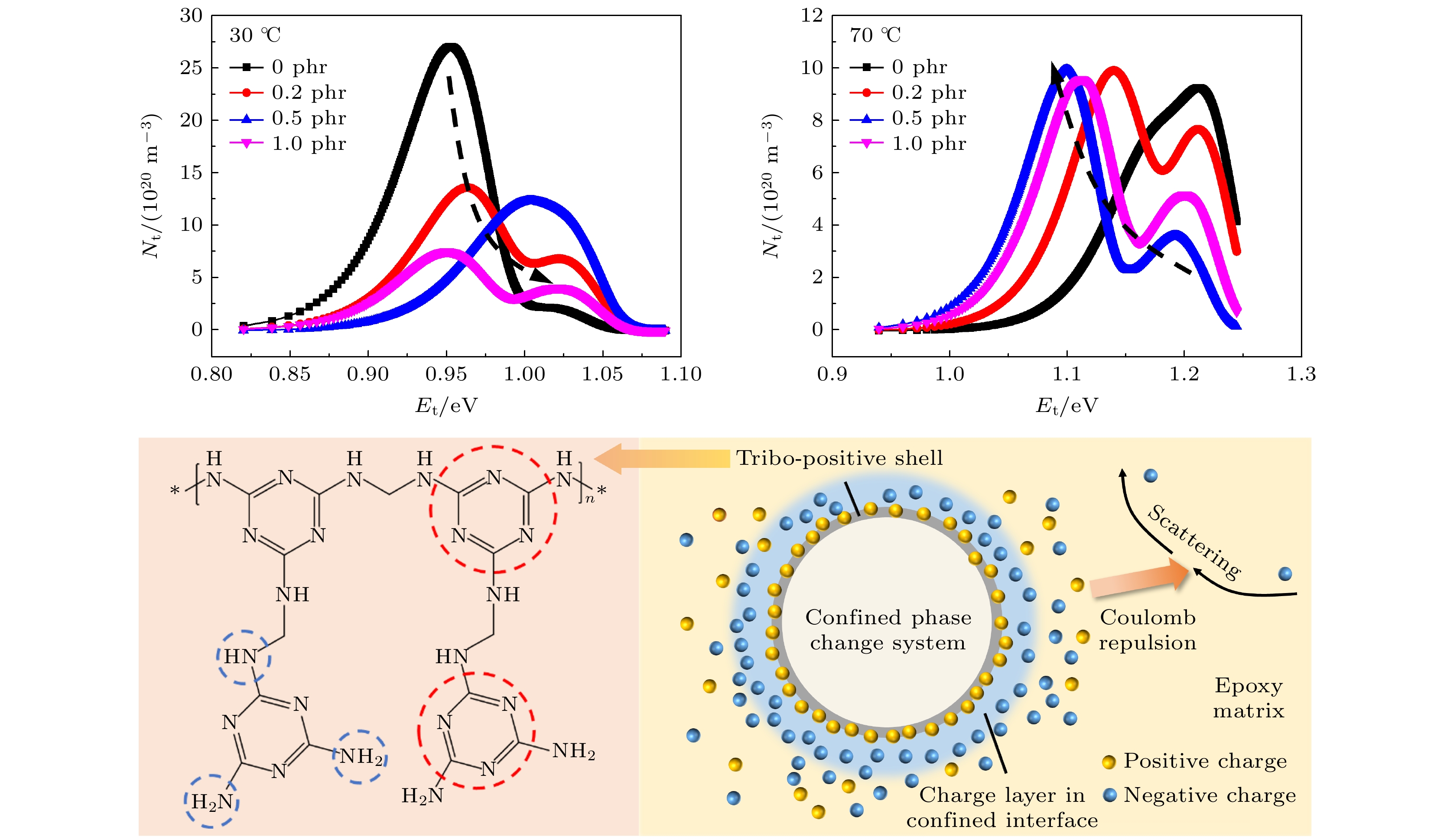
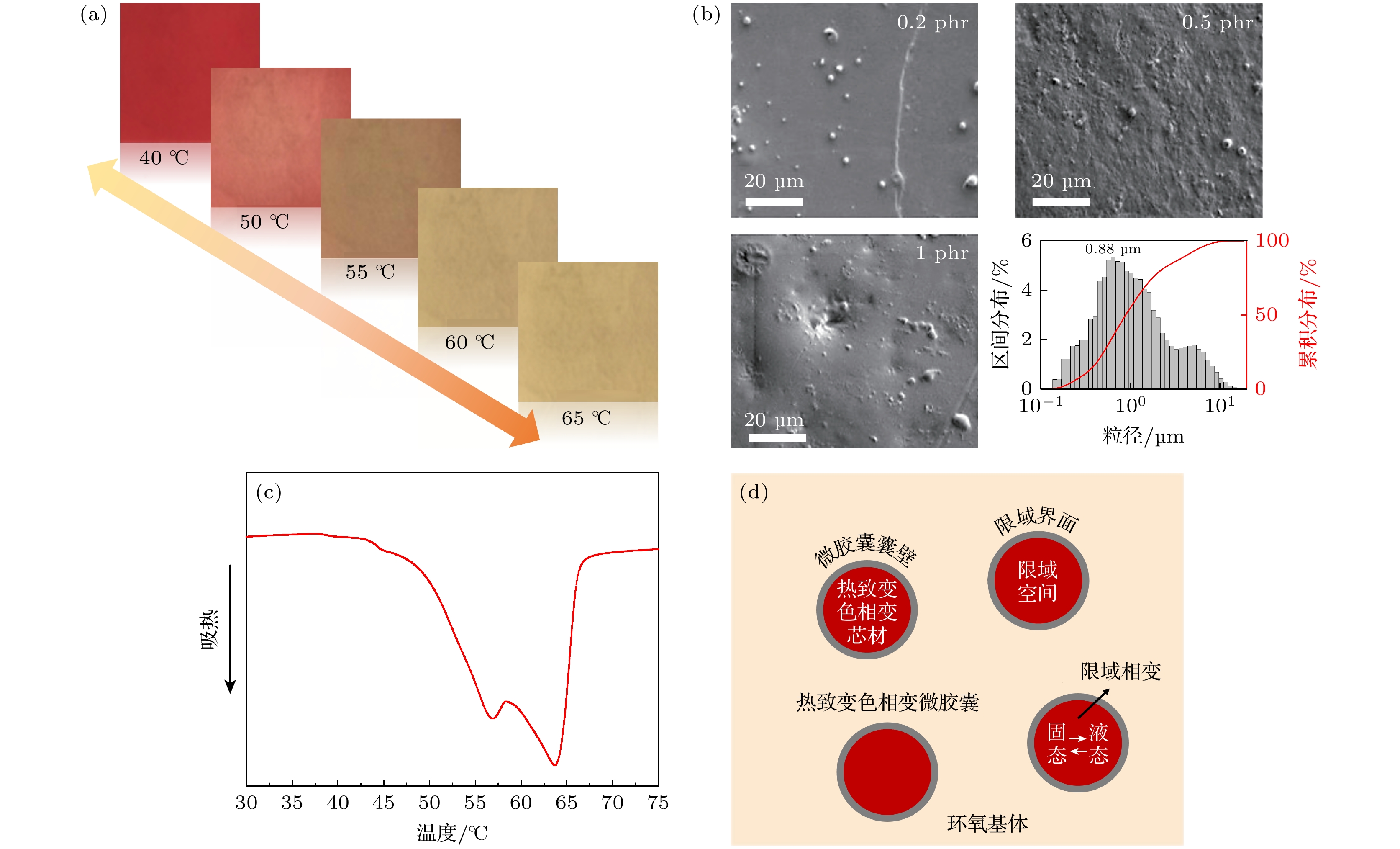
 下载:
下载:


